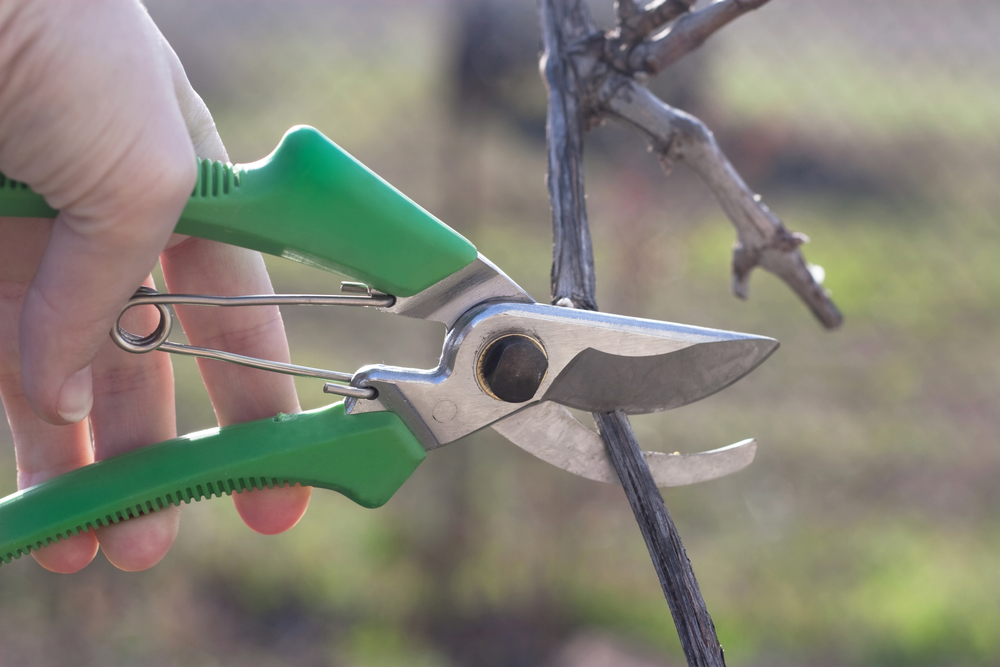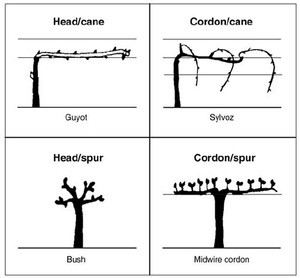Pruning
 Many people in Northern California are complaining about the rain this year. But, we love the rain. You see, here in Amador County, we only get rain two, maybe three, months of the year. So, during that time, we need to fill up the water reserves and fill the clay soil as much as possible to sustain us through the growing season ahead. And, while the vines may look like they're taking advance of the rain and sleeping in late this time of the year, they are actually getting ready to explode out of their shells.
Many people in Northern California are complaining about the rain this year. But, we love the rain. You see, here in Amador County, we only get rain two, maybe three, months of the year. So, during that time, we need to fill up the water reserves and fill the clay soil as much as possible to sustain us through the growing season ahead. And, while the vines may look like they're taking advance of the rain and sleeping in late this time of the year, they are actually getting ready to explode out of their shells.
It is during the month of February you will typically see pruning in the vineyards. It can be argued that pruning is the most important process a vineyard worker can do to ensure vine health and the quality of the eventual wine. How a vine is pruned determine how many buds will develop, clusters will grow, and if the vine will be in "balance".
Balance is what we all strive for, of course, but especially a vine. If, when pruning, a worker leaves too few buds, then only a few clusters develop. This means the leaves and tendrils can go wild. The vine has a dis-proportionate amount of energy going to leaves causing overly "vegetal" growth. Too many leaves mean that the struggling existing clusters don't get to the sunlight, and green pepper or vegetal qualities can seep into the wine.
Too many buds left on the vine means there are too many clusters in proportion to the leaves and tendrils. The photosynthesis in the leaves can't keep up with the needs of the ripening fruit, leaving the fruit undeveloped and lacking complexity and depth. Or, the clusters are unprotected from too few leaves, and sunburn or raisining results.
This isn't the end of the decisions. There are actually several different methods of pruning and subsequent "training". (Training is how the vines that will grow from the vine will be managed during the growing season.) These systems have complicated names like "low-head bilateral cordon". To go into the different types takes a semester at a good viticulture college to learn, and a lifetime to perfect, but basically it depends on the plant and the location. If the vine is in a location with good ground water, or a steep slope, you may choose to prune in a different manner to affect the growth of the eventual fruit and vine to give it the best chance of balance. Likewise, not all varietals are the same. An early-budding varietal, or a particularly vegetal varietal might be pruned differently than each other to help control growth.
Not to add any more pressure, but being a living thing, vines have scars and growth. Meaning pruning marks build on each other year over year. So, the cuts the vineyard workers make this year will affect a vine for years to come.
So, while it may look like quiet vineyards hibernating in the rain, February is actual a vital month in the 2017 growing season. While it may seem cruel to severely cut back the vines to naked little stubs this time of year, it is absolutely critical to the vine health, the vitality of the leaves and fruit, and the quality of the glass.
So, happy snipping!